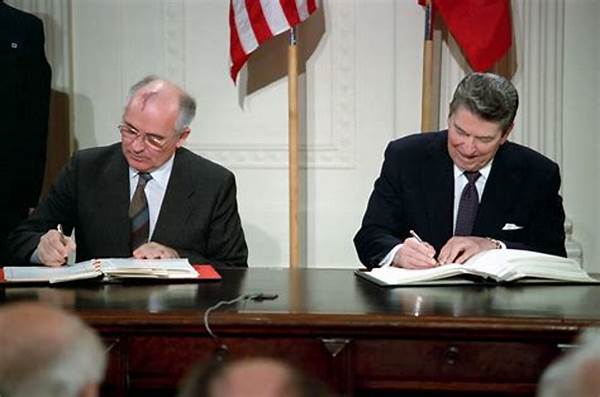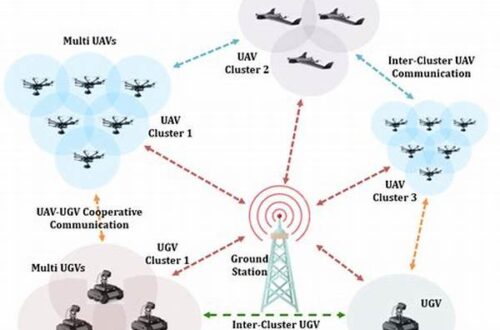Historical Context
The Intermediate-Range Nuclear Forces Treaty, often abbreviated as the INF Treaty, was a pivotal agreement between the United States of America and the then Soviet Union, signed on December 8, 1987. The treaty aimed to eliminate the deployment of nuclear and conventional ground-launched ballistic and cruise missiles with ranges between 500 and 5,500 kilometers. By fostering the decommissioning of such weaponry, it played an instrumental role in de-escalating the Cold War tensions between the two global superpowers. The importance of the intermediate-range nuclear forces treaty lay in its unparalleled framework of reciprocal and verifiable disarmament. As a result, the treaty significantly decreased the threat of nuclear confrontation in Europe and paved the path for future arms reduction agreements. However, the evolving geopolitical landscape and technological advances eventually tested its viability, culminating in its suspension in 2019.
Key Provisions
The intermediate-range nuclear forces treaty stipulated several core mandates. Firstly, it required both signatories to destroy all intermediate-range and shorter-range missiles within three years. Secondly, the treaty encompassed robust verification protocols, including on-site inspections, to ensure compliance. The intermediate-range nuclear forces treaty also established specialized technical means for each party to monitor adherence to the agreement. Furthermore, it necessitated that both nations exchanged detailed data concerning the quantities and locations of missile systems. This unparalleled transparency contributed to the treaty’s significant success in fostering trust amidst political rivalry.
Significance in Cold War Era
The intermediate-range nuclear forces treaty was signed during a period marked by intense rivalry and hostilities between two dominant superpowers. It embodied a breakthrough in arms control, primarily by promoting mutual reductions of nuclear arsenals situated in Europe. The treaty’s implementation underscored the commitment of both nations to defuse burgeoning tensions and showcased the potential for arms control negotiations to transcend existing political divides. By curtailing the intermediate-range capabilities of both countries, the agreement further diminished the likelihood of a European theater conflict, significantly bolstering stability across the continent. Several analysts regard the intermediate-range nuclear forces treaty as a monumental achievement in global diplomacy.
Challenges to the Treaty
The intermediate-range nuclear forces treaty faced several challenges throughout its duration. First, geopolitical dynamics evolved, resulting in divergent strategic interests between the signatory nations. Second, technological advancements, particularly in missile systems, prompted fears of non-compliance. Third, certain third-party nations, not bound by the treaty, continued to develop intermediate-range capabilities, raising concerns over regional security balances. Fourth, accusations of violations surfaced from both sides, straining bilateral relations. Fifth, the rapid advancement of unmanned aerial systems posed interpretational challenges within the treaty’s framework. Sixth, the emergence of new global threats redirected focus away from traditional arms control paradigms.
Termination of the Treaty
The suspension of the intermediate-range nuclear forces treaty marked a significant turn in international arms control trajectories. In 2019, citing alleged violations and strategic threats, the United States formally withdrew from the accord, followed by Russia’s reciprocal withdrawal. This move effectively nullified the treaty, raising alarm among global security experts over the potential for a renewed arms race. Despite its dissolution, the treaty’s legacy endures as a symbol of successful disarmament efforts. Many advocate for a modernized accord encompassing contemporary weapons systems, reflecting the dynamic geopolitical landscape and technological advancements. The intermediate-range nuclear forces treaty serves as a reminder of the enduring challenge of achieving stability through arms control.
Impact on Global Security
The termination of the intermediate-range nuclear forces treaty holds profound implications for global security architecture. Its dissolution has exacerbated concerns over the revival of arms races and regional instabilities, particularly across Europe and Asia. The absence of an enforcement framework has prompted some countries to reconsider their defense postures, raising tensions within existing alliances. In response, diplomatic actors emphasize the urgency of adopting novel arms control measures to address emerging technological threats and preserve strategic equilibrium. Although fraught with complexities, the intermediate-range nuclear forces treaty underscores the necessity of renewed international cooperation in the realm of arms control to mitigate proliferation risks and enhance global security.
Conclusion
In conclusion, the intermediate-range nuclear forces treaty stands as a testament to the power of diplomacy and negotiation in achieving meaningful arms reduction. By facilitating the destruction of thousands of missiles and implementing stringent verification mechanisms, the treaty substantially contributed to global security during its duration. However, the lapse of the treaty reflects the dynamic challenges of adapting to diverse threats within an evolving geopolitical landscape. As nations grapple with emerging technologies and regional rivalries, the spirit of the intermediate-range nuclear forces treaty underscores the pressing need for innovative and cooperative arms control initiatives. Its enduring legacy continues to inspire contemporary discussions on peace and stability in an increasingly complex world.





